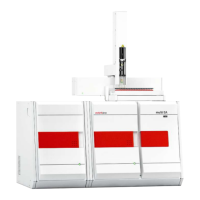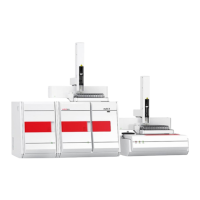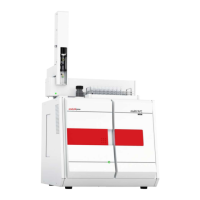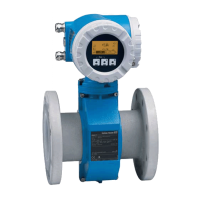Chlorine analysis with the Cl module multi EA 5000
50
Figure25Design of the chlorine detector (without measuring cell)
1 Safety attachment 2 Sulfuric acid container
3 Stirrer/cooling block 4 Connections for electrodes, measur-
ing cells
The wide-range coulometer has 3application ranges. A special measuring cell is used
for each application range:
¡ "high sensitive" for low chlorine content (e.g., fuels, LPG, EOX)
¡ "sensitive" for medium chlorine content (e.g., waste oil, AOX)
¡ "high concentration" for high chlorine content (e.g., waste, polymers, waste oil)
The measuring cells are automatically detected when they are inserted into the stirrer/
cooling block. When the detection module is switched on, the magnetic stirring rod in
the measuring cell starts moving. The preset cell temperature is 18 °C
and can be modi-
fied as a method parameter in the control and analysis software.
The "sensitive" measuring cell
The "sensitive" measuring cell is used for chlorine contents between 1 to 100 µg.
The measuring cell consists of the electrode space, which holds the electrolyte solution,
and the stirrer block in the detection module. A generator anode in the form of a stable
silver plate (silver circle) is located on the bottom of the electrode space. The magnetic
stirring rod runs above the anode.
The cell is sealed airtight with a lid and three knurled head screws. The lid has two
openings:
¡ The opening marked "electrode" is for the amperometric combined electrode.
¡ The unmarked opening is used for direct injection into the measuring cell or to con-
nect to the exhaust.

